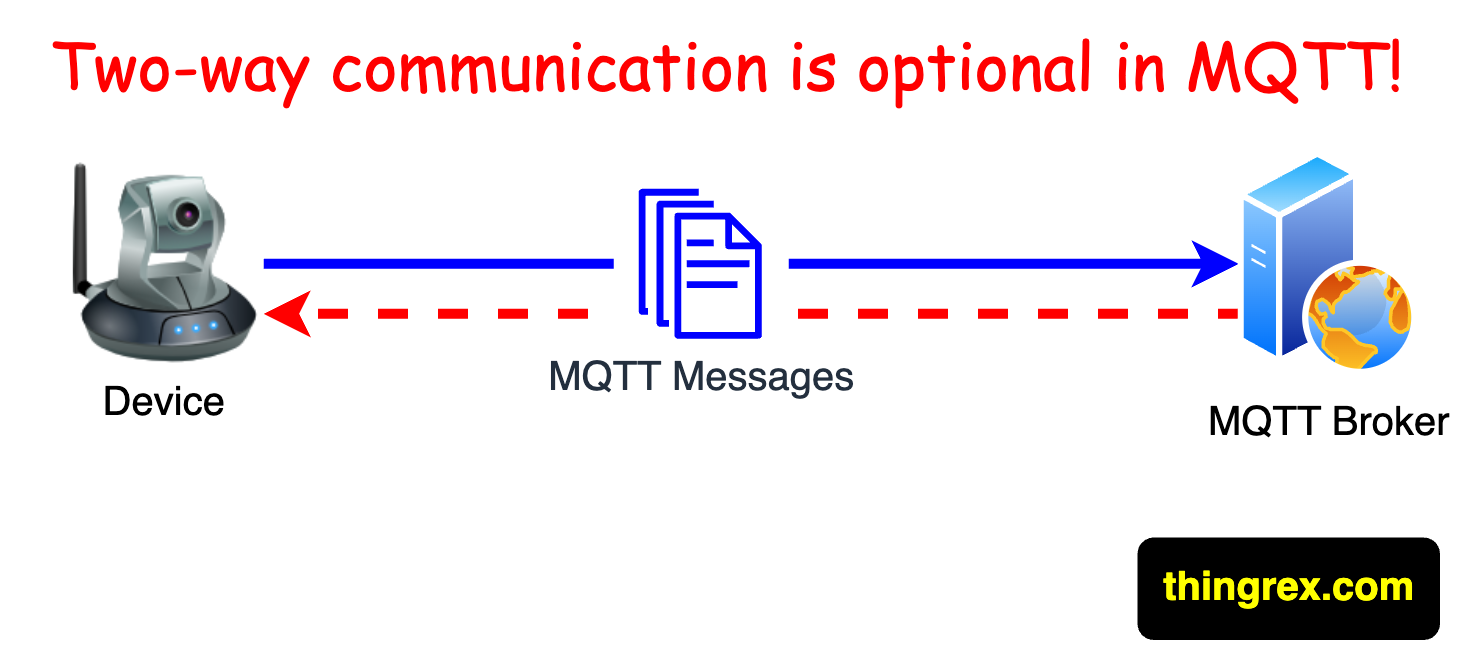
The MQTT is one of the most popular protocols in the Internet of Things domain. It facilitates message exchange between various parties of the IoT system. MQTT provides bi-directional communication between Devices or Applications and the MQTT Broker.
Bi-directional communication means that Devices can send and receive messages via the MQTT Broker.
On the contrary, one-way communication refers to Devices sending telemetry data without accepting incoming transmissions.
For security reasons, some customers request to protect Devices from external access and are concerned about using the MQTT protocol. The fact is that MQTT is a one-way communication by default.
A typical MQTT session looks as follows:
- The Device confirms the identity of the MQTT Broker (one-way),
- The Device publishes messages to dedicated MQTT Topic (one-way),
- (optionally) The Device subscribes to the relevant MQTT Topic (one-way),
- (optionally)The Device accepts any incoming messages from the subscribed MQTT Topic (two-way).
The Device can send telemetry using MQTT without accepting any incoming messages. Subscribing to MQTT Topic is not mandatory if you are concerned about potential security challenges of two-way communication.
You can think of MQTT as a one-way communication, as the Device does not receive MQTT messages by default. Connecting your Device to a remote MQTT Broker does not expose that Device to external access (even if you decide to use a two-way communication model).
Video:

